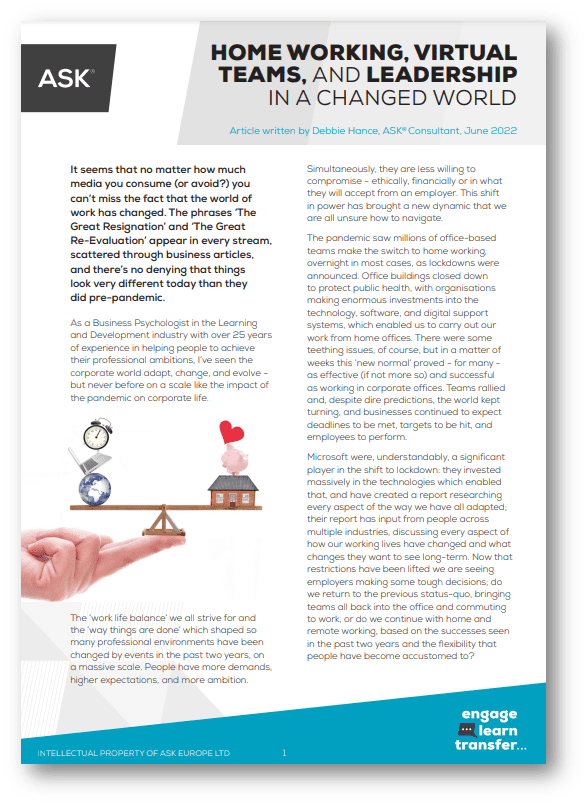Are you a puppeteer or a conductor?
Exploring different models of leadership
There are different types of leader
With leadership there are extremes. Different ways of doing it, and everyone in a position of leadership thinks – or hopes – that theirs is the right approach. Whether they are ruling a country, heading a global enterprise after climbing the corporate ladder or leading a small internal team in their first foray into management, there are as many ways of leading as there are leaders.
On a global scale, both today and historically, we see dictatorships championed in some areas, and other countries led successfully by democratic states. We also see that both can have positive results if they are done right; that each have their challenges and benefits, and that taking any model of leadership to an extreme can lead to trouble.
On a smaller scale, to see how this translates to the workplace and our personal understanding, we can use the analogy of puppeteers vs conductors.
A puppet can only do what their puppeteer instructs – in order for the puppet (the employee…) to move, to take any action – to do the work they are employed to do , the puppeteer needs to pull the strings. This can be elegant, and beautiful, and can be terribly effective – in the right environment. When, however, the puppeteer steps away and drops the strings, the puppet collapses – without direct instruction, the puppet can’t act. Without a leader telling them what to do, the employee can’t perform.
There are, of course, environments and times when a leader needs to give a clear, unambiguous instruction, and their employee needs to do nothing but follow that instruction, without argument, question or error. But in real working environments, with all the permeations of leadership and performance, this ‘dictatorship’ approach to leadership is an extreme example of the kind of boss who can’t delegate, who won’t share the responsibilities of leadership, and who may not even trust their employees to fulfil their roles without direct, hands on, micromanaging.
This might work in some, specific industries, and for some employees – but will be frustrating and stifling for those who need a more creative and involved working environment to thrive. Puppeteer bosses can make their employees feel that they aren’t trusted, aren’t capable, and it will stagnate progress in the team.
Leaders should be adaptable
As a contrast to the Puppeteer Leader let’s consider a Conductor. He stands before the orchestra, indicating who should play and when, and the timing and weighting of each instrument to create a cohesive and harmonic whole. Once everyone’s work is underway the conductor could step away, and things would remain essentially the same, even without his supervision – because everyone already knows what they ought to be doing, and when – and when they doubt it, they may look instead to the lead violinist or percussionist to set the pace…
Applying this analogy to the workplace, when you have a cohesive team, who work together to create a harmonic whole, their leader is a figurehead who guides and provides suggestions and feedback, but doesn’t dictate everything the team do, and the team can continue to perform even in the leader’s absence, letting other people step up to lead when necessary.
This kind of freedom and trust may seem like the leader becomes redundant, unnecessary, when you consider how well things continue to perform in their absence – but it can also be proof that the leadership is effective and wide-reaching, allowing for trust, autonomy and relying on the skills and knowledge of the team, allowing them to pull together and continue with their role without needing to be watched over or dictated to.
In reality of course, the most effective leaders don’t sit fully at either end of the dictatorship-democracy scale, but instead recognise that there are times that their employees need firm guidance and support, and times when it’s more appropriate to step back and let them make decisions of their own.
Finding the balance isn’t always easy, but it’s important to recognise our own skills as leaders, and the skills that those we lead bring, and create a team that comes together as a whole, with some pulling strings, some playing strings, and some threading new strings for future successes so the performance can seamlessly continue. (Are we stretching this analogy too far?)
If your approach to leadership is puppeteering, the fear is that letting any string fall means things go wrong, and you become tangled in your own control over what everyone is doing.
On the other hand, if your approach is absent conductor, people may be floundering and making things up as they go, sliding into disharmony with nobody to guide the way.
If you would like to explore your innate approach to leadership, and how to work with your natural approach, experience and knowledge, and become the best leader you can be, embracing your own skills and those of the people who influence you and work alongside you, give us a call and ASK how we can support your journey to leadership success.
If you’re not sure you’re ready for a call, download our programme guide to learn more about our approach to leadership development, and our coaching.



